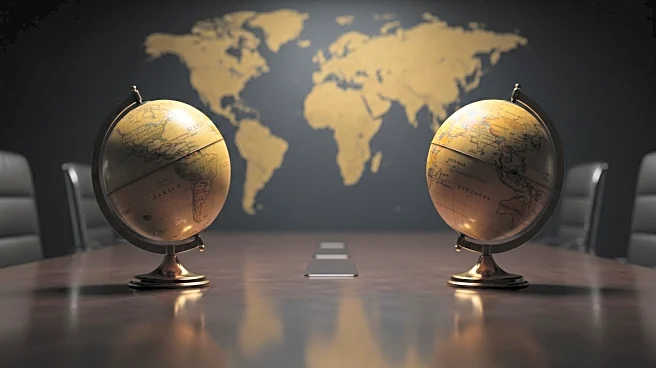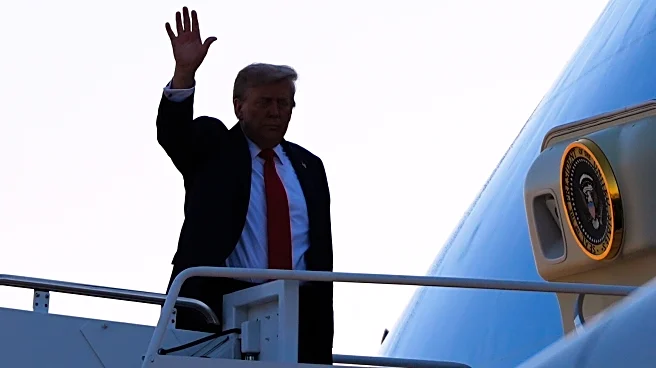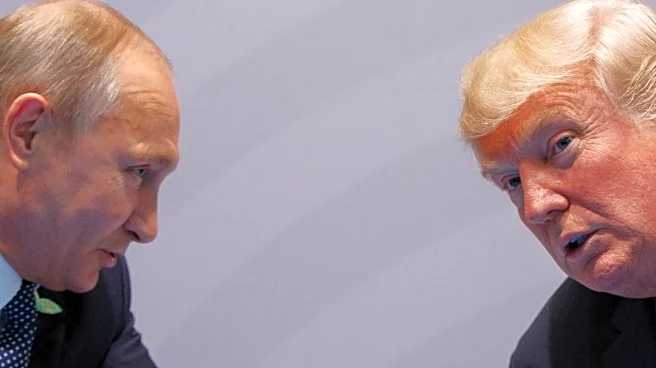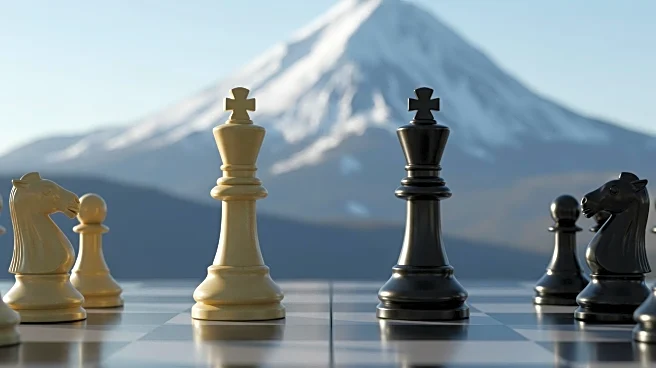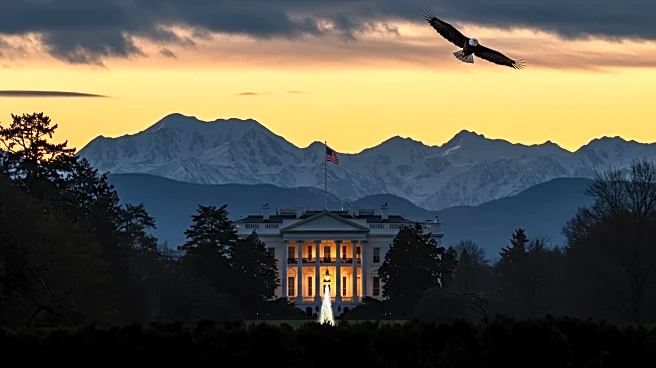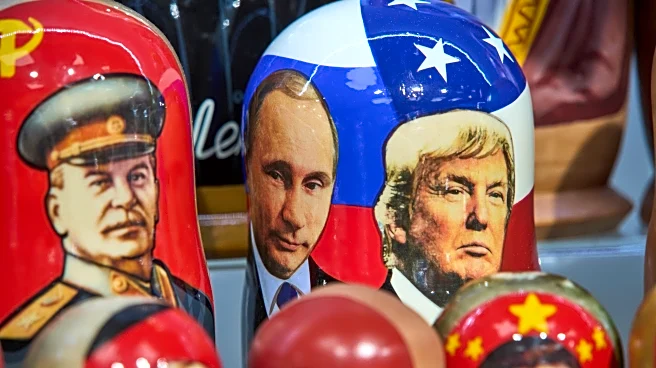What's Happening?
President Donald Trump and Russian President Vladimir Putin met at Joint Base Elmendorf-Richardson in Alaska to discuss the ongoing Russia-Ukraine war. Despite Putin's claim of reaching an 'understanding,' Trump stated that no formal agreement was made to end the conflict. The summit, which lasted about two and a half hours, concluded with both leaders praising each other but offering limited details on the discussions. Trump emphasized that while many points were agreed upon, significant issues remain unresolved. He plans to brief Ukrainian President Volodymyr Zelenskyy and European leaders on the talks. The meeting marks Putin's first visit to the U.S. in a decade, potentially stalling economic sanctions that Trump had threatened unless Moscow made efforts to end the fighting.
Why It's Important?
The summit between President Trump and Putin is significant as it highlights ongoing diplomatic efforts to resolve the Russia-Ukraine conflict, which has been the largest land war in Europe since 1945. The meeting could influence future U.S.-Russia relations, as both leaders expressed a desire to 'turn the page' and resume cooperation. The lack of a concrete agreement may prolong the conflict, affecting geopolitical stability in Europe and potentially impacting global economic conditions. The summit also underscores the strategic importance of Alaska as a venue for high-stakes international diplomacy.
What's Next?
President Trump plans to engage with Ukrainian President Zelenskyy and European leaders to discuss the outcomes of the summit. Future meetings between Trump and Putin may occur, as suggested by their remarks, potentially in Moscow. The continuation of diplomatic talks could provide Russia with more time to advance its military objectives while avoiding further sanctions. The international community will likely monitor these developments closely, assessing their impact on the conflict and broader geopolitical dynamics.
Beyond the Headlines
The summit's implications extend beyond immediate diplomatic outcomes, potentially affecting U.S.-Russia relations and international perceptions of both leaders. The meeting in Alaska, a strategic location, may symbolize a shift in diplomatic engagement strategies. The discussions could also influence public opinion and political narratives in both countries, as leaders navigate complex geopolitical challenges.
